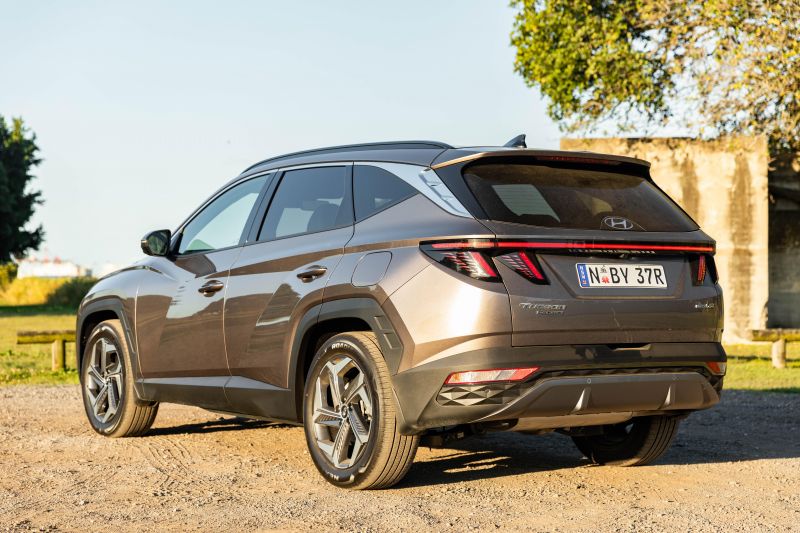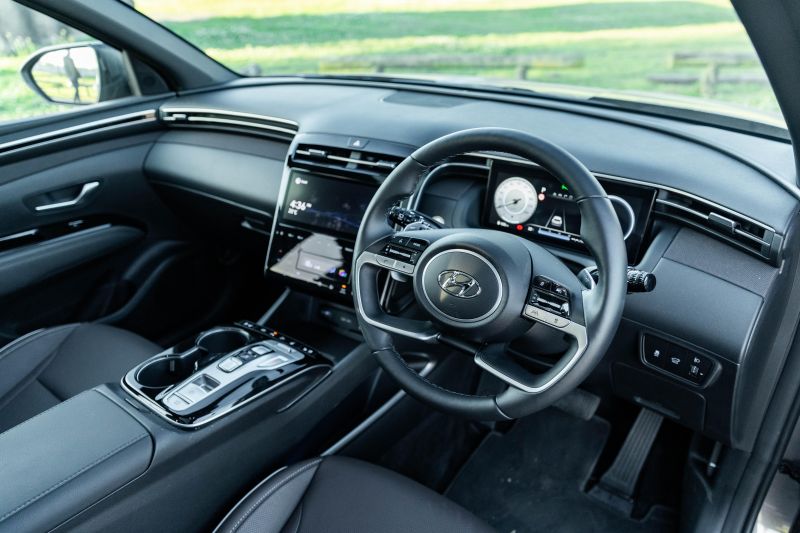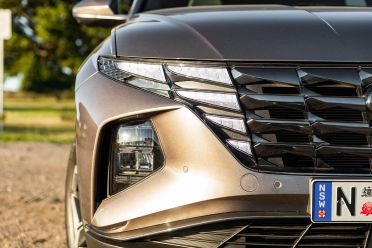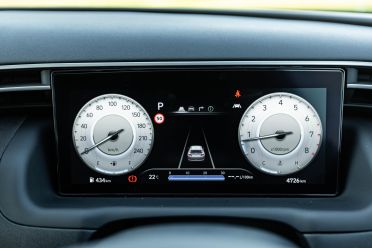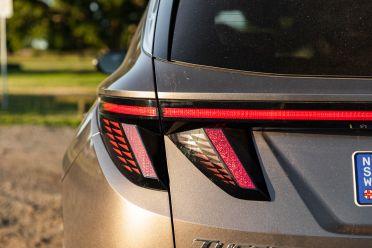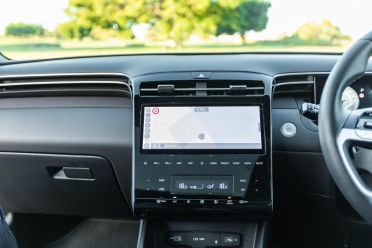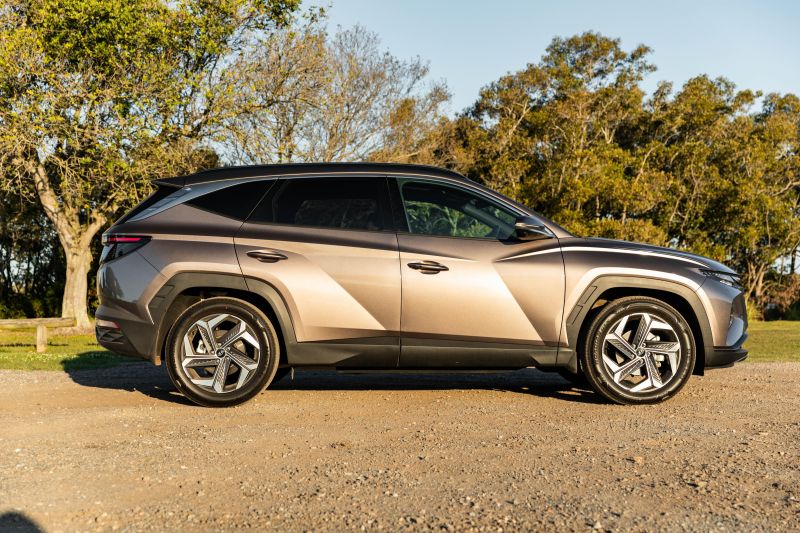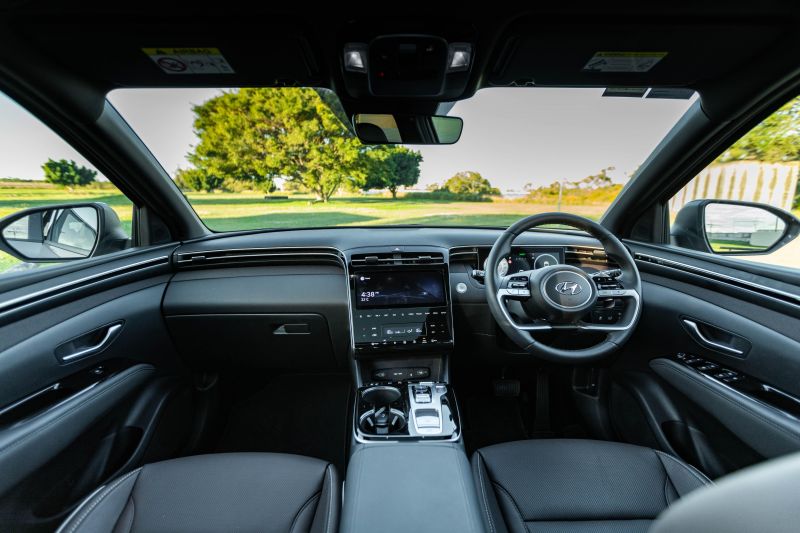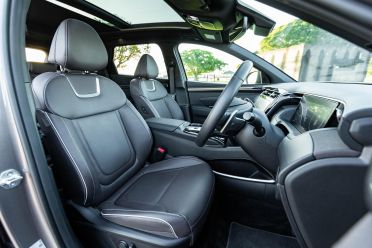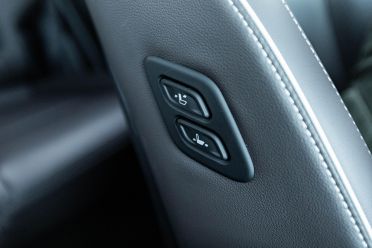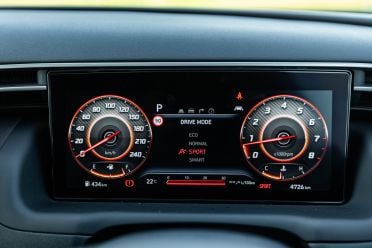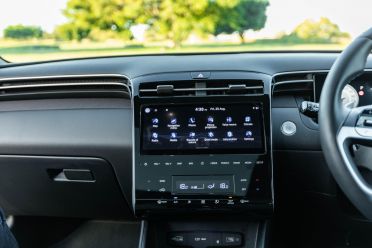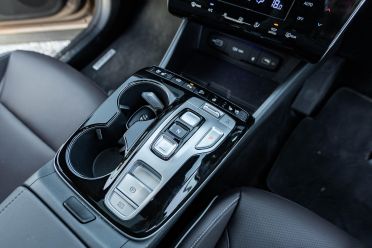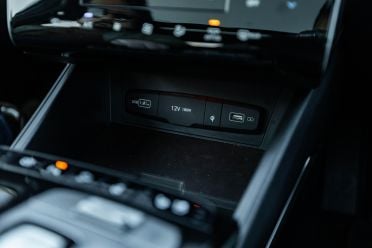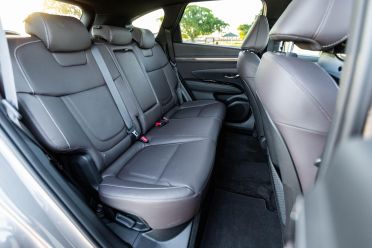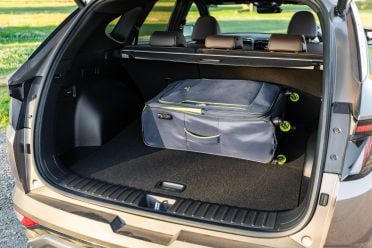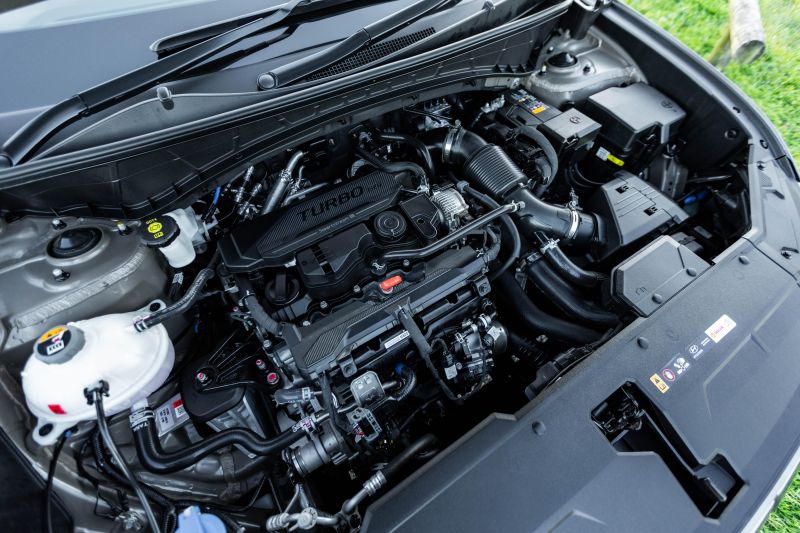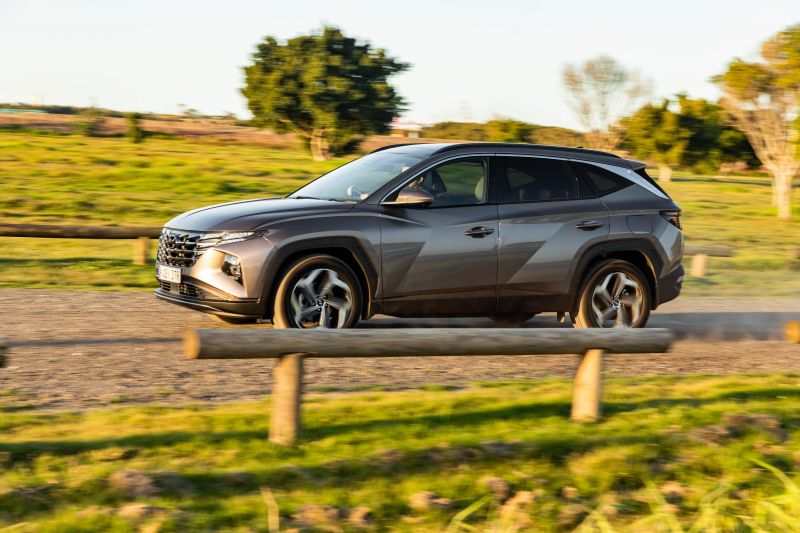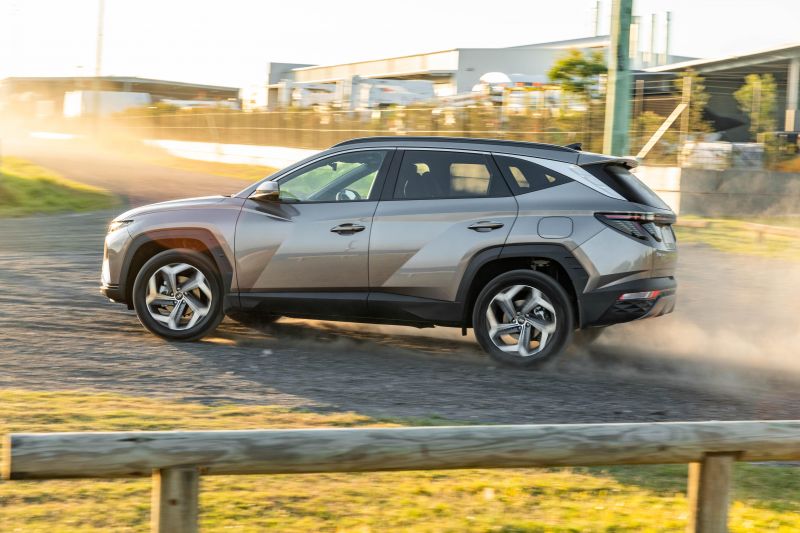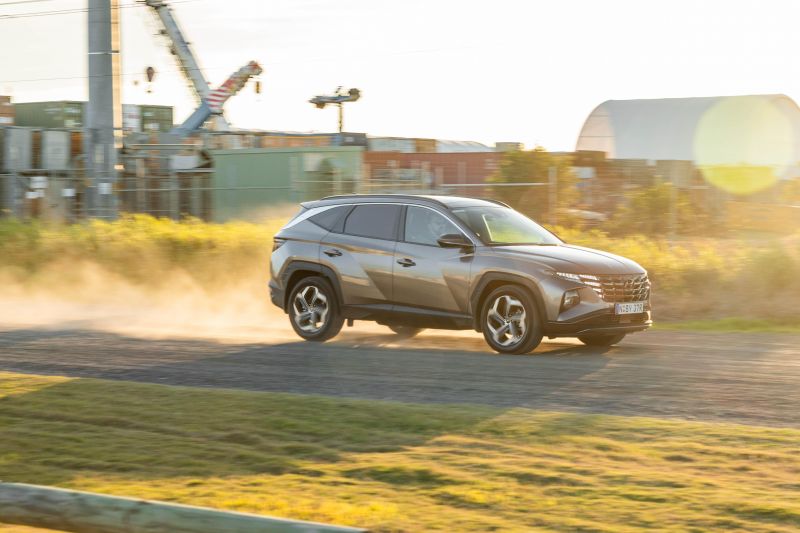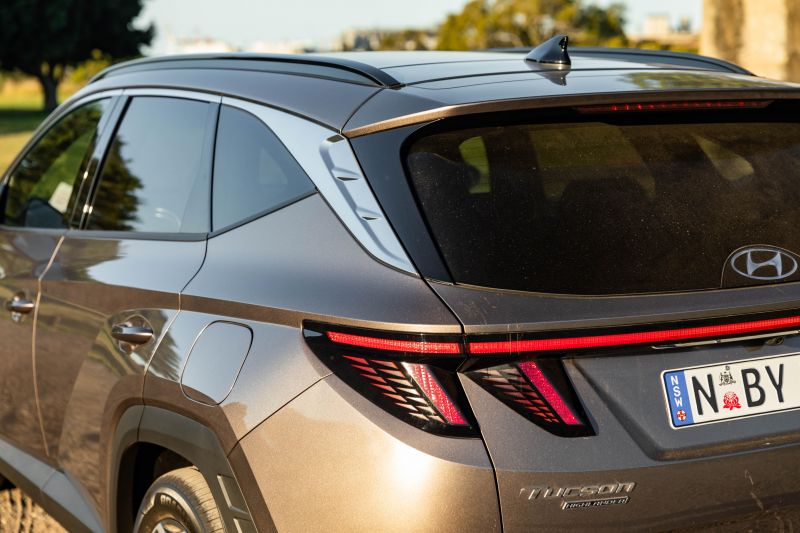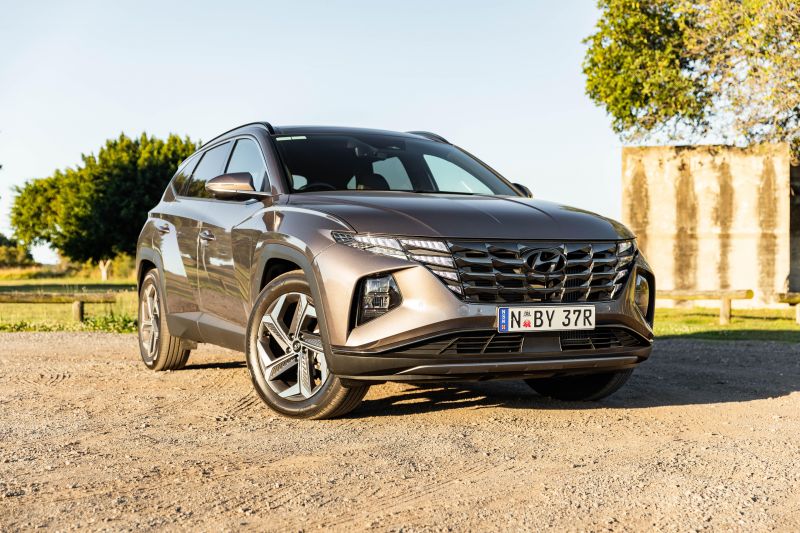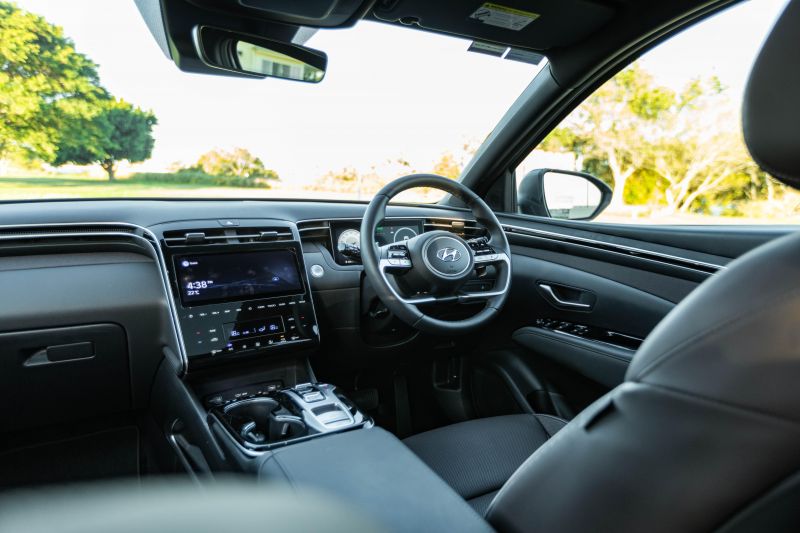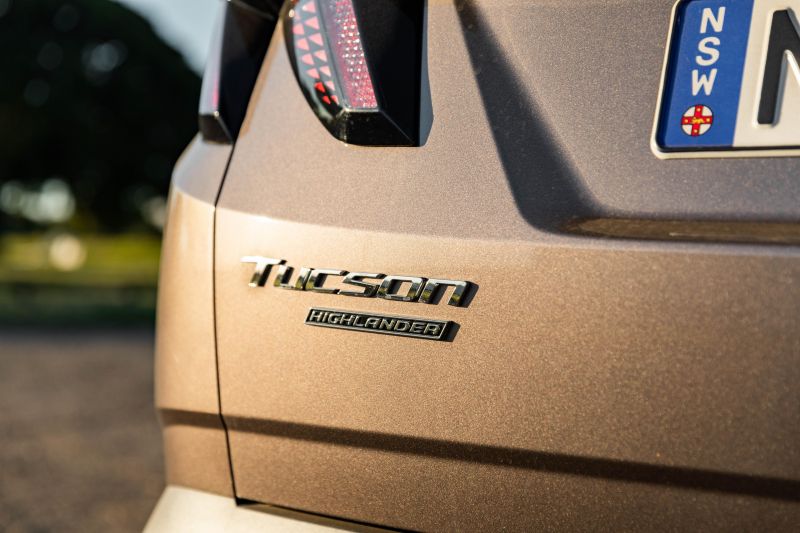We may have already forgotten what the last Hyundai Tucson looked like.
Sure, it was a handsome thing in an inoffensive way, but the new Tucson is all creases and bulges and interesting details.
Here we have it in Highlander trim, with LED lighting all-round – something that frankly should be standard across the range – plus 19-inch alloy wheels.
It looks like the clearest vision of what the designers were going for.
The interior, too, is a dramatic departure from the last car. And while the powertrains are all-too familiar from the previous model, the Tucson rides a new platform and has an 85mm longer wheelbase that affords it a more spacious cabin.
So, has the Tucson been meaningfully improved in more than just looks and length?

How much does the Hyundai Tucson Highlander 1.6T AWD cost?
With the redesigned Tucson, Hyundai has expanded the number of variants from 11 to 14. The Active X trim is gone, but the base, Elite and Highlander are all available with a new N Line package.
Although this Highlander is the top trim level, our tester isn’t the most expensive Tucson. That’s because there’s a cheaper naturally-aspirated 2.0-litre petrol four-cylinder and a more expensive 2.0-litre turbo-diesel four bookending our 1.6-litre turbo-petrol, while our tester is lacking the optional N Line package.
Our Highlander 1.6T AWD tester is priced from $50,000 before on-road costs.
You can add the N Line package for an extra $1000 or the diesel engine for another $2000, while the combination of the two is – you guessed it – an extra $3000. You can also add a brown leather interior for $295.
Alternatively, you can drop back to the 2.0-litre petrol Highlander and save $4000 compared to our tester.
With the $595 premium paint added, our Tucson came to $55,236 drive-away based on a New South Wales postcode.
All-wheel drive rivals for the Tucson Highlander include:
- Ford Escape Vignale: $49,590
- Honda CR-V VTi-LX: $53,200 drive-away
- Jeep Cherokee Limited V6: $50,450
- Kia Sportage GT-Line petrol: $47,090
- Nissan X-Trail Ti: $45,965
- Renault Koleos Intens: $45,790
- Subaru Forester 2.5i-S: $44,190
- Toyota RAV4 Edge: $48,915
- Volkswagen Tiguan 162TSI Elegance: $50,790
All prices exclude on-road costs unless otherwise specified.
There’s also the redesigned Mitsubishi Outlander in lavish Exceed Tourer spec at $49,990 before on-roads. The Mazda CX-5 in flagship Akera trim costs $49,380 list with the naturally-aspirated 2.5-litre four, but the turbocharged version is a tantalising $51,880 list.
What do you get?
This is one of the most comprehensively-equipped models in its segment, and our tester is missing just a few items: the clever remote smart-parking assist exclusive to the diesel Highlander, plus the sporty bric-a-brac of the N Line like metal pedals and sport seats.
Standard equipment includes:
- 10.25-inch touchscreen infotainment system
- 10.25-inch digital instrument cluster
- Satellite navigation
- Wired Android Auto and Apple CarPlay
- DAB+ digital radio
- Eight-speaker sound system
- Leather upholstery
- Heated and ventilated front seats
- Heated rear seats
- Heated steering wheel
- 10-way power driver’s seat with memory
- Eight-way power passenger seat
- Leather-wrapped steering wheel
- Dual-zone climate control
- Keyless entry and start
- Hands-free power tailgate
- Wireless phone charging
- Panoramic sunroof
- Ambient lighting
- Automatic high-beam
- Automatic LED headlights and tail lights
- Cornering lights
- Rain-sensing wipers
- Heated, power-folding exterior mirrors
- Reversing camera
- Front and rear parking sensors
- One-touch up/down power windows
- Paddle shifters
- Electronic parking brake with Auto Hold
- 19-inch alloy wheels
- Tyre pressure monitoring
- Full-size alloy spare
There’s no head-up display, while the Tucson also misses out on the Tiguan 162TSI Elegance’s adaptive suspension, adjustable ambient lighting and Matrix LED headlights.
The German, however, misses out on ventilated seats, while a panoramic sunroof adds $2000 to its price.
Is the Hyundai Tucson Highlander 1.6T AWD safe?
The Tucson has yet to be tested by ANCAP. It wants for nothing in terms of safety equipment, however.
Standard safety kit includes:
- AEB with pedestrian/cyclist detection and junction assist
- Adaptive cruise control with stop/go
- Blind-spot assist
- Rear cross-traffic assist
- Intelligent speed limit assist
- Lane-keep assist
- Lane Following Assist (lane centring)
- Reversing camera
- Rear parking sensors
- Leading vehicle departure alert
- Safe exit warning
- Tyre pressure monitoring
- Front, front-side and curtain airbags plus a front-centre airbag
The inclusion of blind-spot assist and rear cross-traffic assist is notable. While blind-spot monitoring and rear cross-traffic alert are commonplace in this segment, if not yet universal, Hyundai has gone further than a mere audible and visual alert.
Instead, if either system detects you’re about to reverse or veer into the path of another vehicle, it’ll apply the brakes.
The Highlander also comes with Hyundai’s clever new Blind Spot View Monitor, which displays camera footage from your blind spot when you turn your indicators on.
What is the Hyundai Tucson Highlander 1.6T AWD like on the inside?
The last Tucson’s interior was pleasant and inoffensive but hardly memorable.
The new car’s interior makes an impression, but it’s quite a different one to that of the wild new exterior.
Instead of the creases, intricate lighting and unusual details of the exterior, the Tucson’s interior is elegant. There’s a premium look to the dashboard, with its subtle dual-cowl style and its flowing centre stack.
Regrettably, the centre stack is almost entirely finished in piano black touch-capacitive switches – which lack haptic feedback – and yet you feel like giving it a pass because it looks so classy.
The fabric accents on the dashboard and doors don’t match the leather seats but they’re nevertheless a nice touch, while there are soft-touch plastics used for the dash and doors. Harder stuff can be found in the lower reaches of the cabin, as it can on any rival, but overall the choice of materials in this cabin is top-notch.
While the 10.25-inch touchscreen is neatly integrated into the centre stack, eschewing the stuck-on tablet look of so many modern cars’ touchscreens, the digital instrument cluster is a little less harmoniously integrated.
It’s clear to read and boasts different styles depending on the drive mode, though there isn’t the level of functionality and customisation you’ll find in a Volkswagen Tiguan. You can’t, for example, display a map on here.
The infotainment system is excellent. The lack of wireless smartphone connectivity grates, especially knowing it’s available on Hyundai systems without satellite navigation, but otherwise this is a superb unit.
The graphics are modern, though for my money the neon pink theme of sister brand Kia’s screens is more eye-catching. Response times are quick, menus are intuitive, and there are neat features like the Sounds of Nature app with its range of ambient soundscapes.
The voice prompt button on the steering wheel only works when you’re using smartphone mirroring, which is a touch disappointing given you can use voice prompts with the factory systems of rivals like the Mazda CX-5.
In fairness, though, OEM systems never seem to understand voice prompts as well as Apple CarPlay or Android Auto.
There’s a bridge-like centre console with a push-button gear selector – yes, this is one aspect where Hyundai has decided to employ more buttons instead of fewer.
It works but, if you’re anything like me, you’ll prefer an actual shifter or even a rotary dial.
The centre stack drops away and at the base of it you’ll find a wireless charging pad, a 12V outlet, and two USB-A ports. Hyundai has yet to introduce USB-C ports to the Tucson.
The massive panoramic sunroof stretches all the way back to the second-row headrests and lets in a glorious amount of light without noticeably eating into headroom.
Indeed, the back seat is resplendent with room – head, knee, toe, you name it. You can thank Hyundai for stretching the wheelbase by 85mm with this new generation, which has paid dividends in the rear of the cabin.
There are air vents and two USB-A outlets at the rear of the centre console, plus bottle holders in each of the doors like you’ll find up front. There’s a fold-down centre armrest, plus three top-tether and two ISOFIX anchor points for child seats.
The boot has also grown, with capacity increased from 488L of volume with the second-row up and 1478L with them down up to 539L and 1860L, respectively. To drop the second row, you can press a button in the boot.
There’s also a 12V outlet back here, while underneath the boot floor is a full-size alloy spare.
What’s under the bonnet?
Our tester was equipped with the turbocharged 1.6-litre petrol four-cylinder engine, which produces 132kW of power at 5500rpm and 265Nm of torque at 1500-4500rpm.
It’s mated to a seven-speed dual-clutch automatic transmission and is only available with all-wheel drive, which arguably explains the $4000 premium over the standard 2.0-litre atmo engine despite the 1.6T’s middling outputs.
There’s 17kW more on tap than the 2.0-litre base engine and, more importantly, 73Nm more torque. Suffice it to say, this is a much more impressive engine than that underdone base mill.
Braked towing capacity is a claimed 1650kg, while unbraked is 750kg. If you want to tow more, the diesel increases braked capacity to 1900kg.
How does the Hyundai Tucson Highlander 1.6T AWD drive?
The Tucson impresses with its refinement.
The cabin is hushed, even at highway speeds, while the turbocharged engine’s soundtrack is much more pleasant to listen to than some other four-cylinder engines in the Hyundai line-up.
Though dual-clutch automatic transmissions are often known for their frustrating low-speed hesitation and roughness, Hyundai has smoothed its seven-speed unit out nicely.
The drawbacks of a DCT, therefore, have been largely quelled while the Tucson still benefits from the quick shifts this transmission type is renowned for. There’s still a slight hesitation at take-off but it’s scarcely noticeable.
While Hyundai Australia didn’t develop a bespoke suspension tune for this Tucson, the global engineering team has struck a really good balance here between a comfortable ride and composed handling. The suspension is a touch firm, but the Tucson nevertheless gobbles up all manner of bumps and ruts without sending impacts crashing through the structure.
Additionally, you have the kind of neutral, balanced handling expected of a mid-size SUV. It’s not particularly sporty, but body roll and understeer are well-controlled, the car’s weight shifts predictably in corners, and overall there are no unpleasant surprises. That goes for the steering, too, which is nicely-weighted.
Perhaps the only unpleasant surprise in the Tucson’s dynamic repertoire is its brake pedal. It feels spongy and hard to modulate, which diminishes your confidence.
The all-wheel drive system is a bit more reactive than proactive, and you can encounter some wheelspin when you’re too eager to turn at a junction from a standstill.
As expected of virtually every Hyundai bar the Kona, the lane-keep assist works well though it may come on a touch strong for some buyers’ tastes.
The Lane Following Assist is even more assertive, but does an admirable impression of a self-driving car when you’re on the highway – that is, until the system tells you to stop mucking about and put your hands back on the wheel.
How much does the Hyundai Tucson Highlander 1.6T AWD cost to run?
Over a mix of inner-city, urban and suburban driving, we averaged 8.6L/100km. Hyundai claims a combined fuel economy figure of 7.2L/100km. It runs on 91 RON regular unleaded fuel.
Hyundai covers the Tucson with a five-year, unlimited-kilometre warranty. Under its capped-price servicing scheme, the first five services are capped at $319 each.
That’s more reasonable and consistent than the service pricing for a Kia Sportage, though it’s pricier to service than a Toyota RAV4 – then again, what isn’t?
Service intervals are a little short at 12 months or 10,000km. The other two engines in the Tucson range require servicing every 12 months or 15,000km.
CarExpert’s Take on the Hyundai Tucson Highlander 1.6T AWD
The redesigned Tucson punches above its weight in terms of presentation and safety equipment.
It offers the most impressive list of safety equipment of any mainstream mid-size SUV, while its cabin is classy and thoroughly modern.
This powertrain is so much better resolved than the base engine. It’s more powerful, sounds better, and even the transmission feels more refined.
In the absence of a front-wheel drive option with the more powerful 1.6-litre turbo, it’s a big jump from the base engine to the more powerful petrol on test here.
Would a stepping stone like the 2.5-litre engine offered in the USA be nice? Yes, but this is still the engine to buy if you can afford to make the leap, especially if you’re hauling your family and their stuff around.
The latest Tucson may have received price increases across the board, but it feels so much more modern and desirable. And in top-spec Highlander trim, the Tucson makes a compelling case for itself over, say, an entry-level European SUV from a premium brand, though so does a Tiguan 162TSI Elegance.
Judging the Tucson Highlander on its merits, this is a top-notch mid-size SUV let down only by a spongy brake pedal and smudge-y switchgear.
Crucially, its style inside and out is backed up by serious substance.
Click the images for the full gallery





